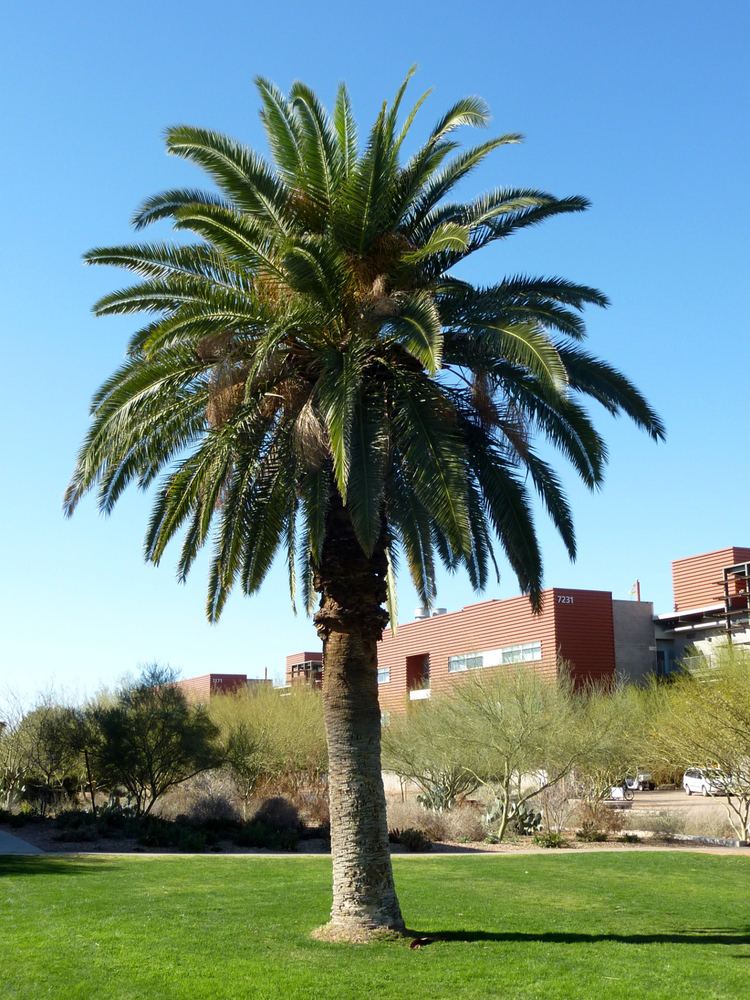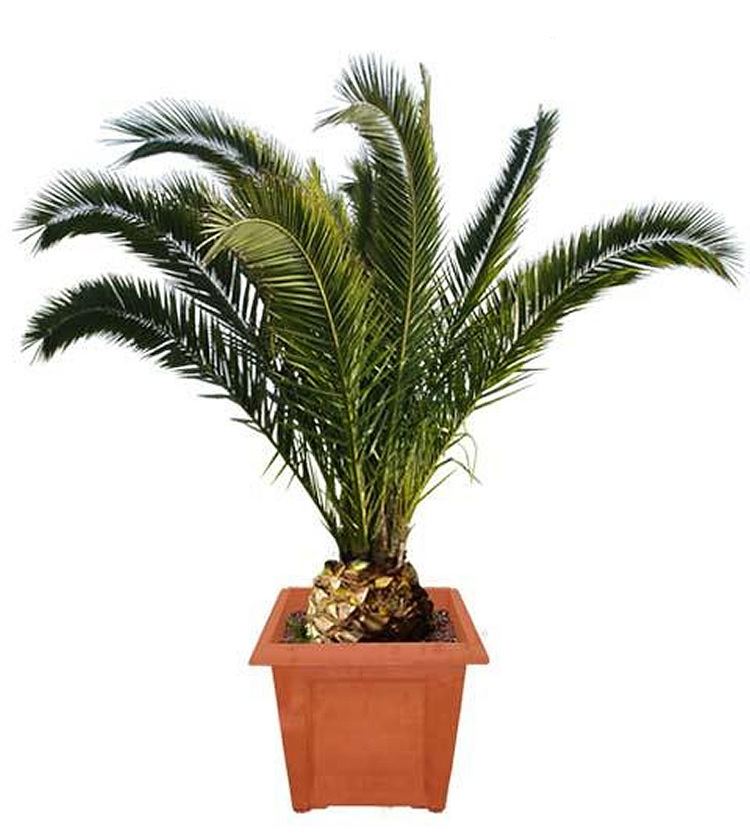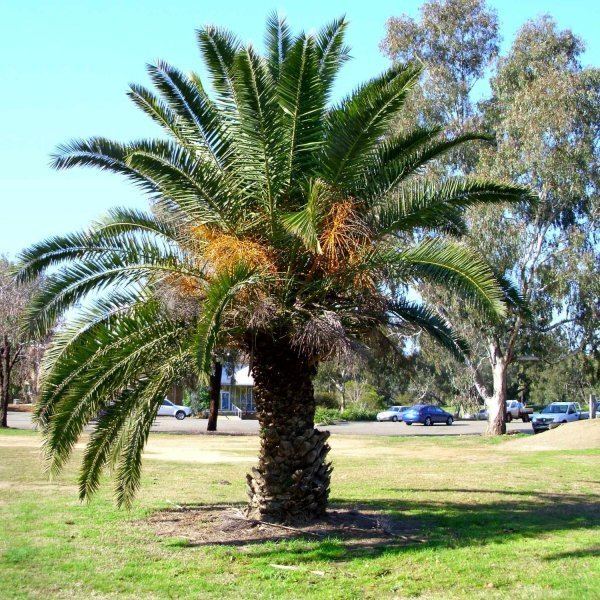Rank Species | Genus Phoenix Higher classification Date palms | |
 | ||
Similar Palm trees, Date palms, Washingtonia, Chamaerops, Washingtonia filifera | ||
Plant id canary island date palm phoenix canariensis
Phoenix canariensis is a species of flowering plant in the palm family Arecaceae, native to the Canary Islands. It is a relative of Phoenix dactylifera, the true date palm. It is the natural symbol of the Canary Islands, together with the canary Serinus canaria. Mature Phoenix canariensis are often used in the ornamental landscape and are collected and transplanted to their new planting location. A Canary Island Date Palm with 30 feet of trunk is approximately 60 years of age.
Contents
- Plant id canary island date palm phoenix canariensis
- Description
- Names
- Cultivation
- Other uses
- Invasiveness
- References

Description

Phoenix canariensis is a large solitary palm, 10–20 m (33–66 ft) tall, occasionally growing to 40 m (131 ft). The leaves are pinnate, 4–6 m (13–20 ft) long, with 80–100 leaflets on each side of the central rachis. The fruit is an oval, yellow to orange drupe 2 cm (0.79 in) long and 1 cm (0.39 in) in diameter and containing a single large seed; the fruit pulp is edible but too thin to be worth eating.
Names

Common names in English include Canary Island date palm and pineapple palm. The common name in Spanish-speaking countries and in the Canary Islands is palmera canaria.
Cultivation

The Canary Island date palm is typically cultivated in subtropical climates, particularly in dry-summer subtropical climates Mediterranean climates, but also in wet-summer or humid subtropical climates like eastern Australia and the southeastern United States. There are even several instances of cultivated Canary Island Date Palms in high-latitude oceanic climates, such as Ireland and the Channel Islands. It can be cultivated where temperatures rarely fall below −10 or −12 °C (14 or 10 °F) for extended periods, although it will require some protection if cold periods are longer than normal. It is a slowly growing tree, exclusively propagated by seed.

The palm is easily recognized through its crown of leaves and trunk characteristics. It is not uncommon to see Canary Island date palms pruned and trimmed to enhance the appearance. When pruned, the bottom of the crown, also called the nut, appears to have a pineapple shape.

The Canary Island date palm is susceptible to Fusarium wilt, a fungal disease commonly transmitted through contaminated seed, soil, and pruning tools. Spread of the disease can be reduced when pruning tools are disinfected before use on this palm.
It has gained the Royal Horticultural Society's Award of Garden Merit.
Other uses
In the Canary Islands, the sap of this date palm is used to make palm syrup. La Gomera is where most of the sap is produced in the Canary Islands.
Invasiveness
In some mediterranean and subtropical countries, Phoenix canariensis has proven to be an invasive plant. In New Zealand, it has invaded a range of habitats. It is also considered naturalised in peninsular Spain, Italy, Australia, Bermuda and parts of the United States (Alabama, Arizona, California, Florida, Georgia (U.S. state), Louisiana, Mississippi, Southern Nevada, South Carolina, and Southern Texas). It is listed as invasive in California. In Auckland, New Zealand, the palm has itself become a host for the naturalised Australian strangler fig, Ficus macrophylla.
